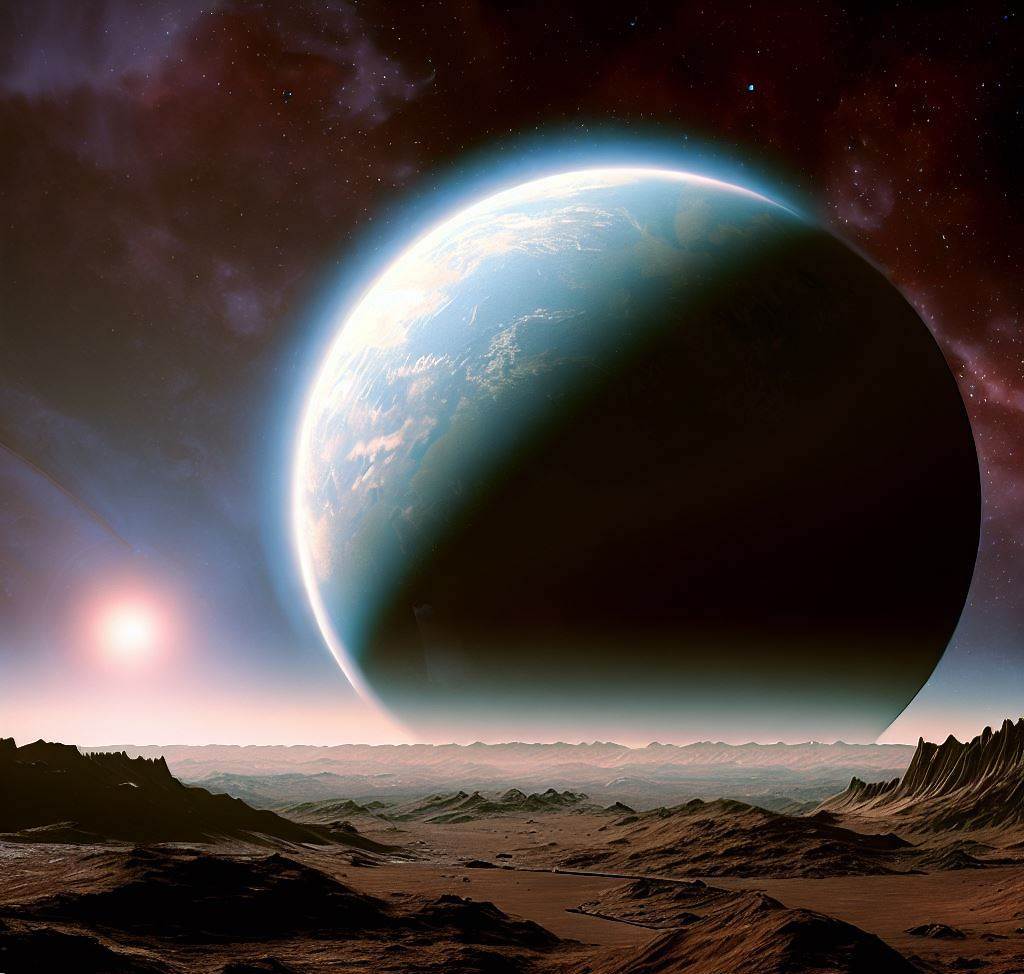Researchers Identified Habitual Planets
With A Greater Potential Than Earth.

In a groundbreaking discovery, scientists have identified a planetary system that seems to be even more conducive to habitability than Earth. This planetary system, known as Gliese 667, shares some similarities with the famous Alpha Centauri system, as it also consists of three stars. Among these stars, Gliese 667 A takes the lead as the largest one in the system, classified as a K-type main-sequence star. It possesses distinctive properties, with a mass of 73% and a radius of 76% of our Sun. Surprisingly, its visual luminosity is a mere 12% of that of the Sun.
Accompanying Gliese 667 A is GJ 667 B, another K-type orange-red dwarf, about 69% the mass of the Sun, and radiating only 5% of our Sun's visual luminosity. However, it is Gliese 667 C, an M-type red dwarf, that captivates scientists with its diminutive size, having a mass and radius just a third of that of the Sun. Despite its faint luminosity, emitting only 1.4% of the Sun's light, and its chilly surface temperature of 3,775 Kelvin, this tiny star surprisingly hosts a remarkable planetary system.
Initially, researchers believed that Gliese 667 C harbored only three exoplanets, but with a comprehensive reassessment of existing data and additional observations, they have now postulated the existence of six planets within this system. Among them, three or possibly four are believed to be potentially habitable super-Earths—planets larger than Earth but not as massive as gas giants like Jupiter and Saturn. These super-Earths could be composed of rock or a combination of rock and ice, with atmospheres that might support diverse forms of life.
At the forefront of interest in this planetary system is Gliese 667 Cc, situated within the star's habitable zone—a region with conditions potentially suitable for liquid water to exist on a planet's surface. Gliese 667 Cc's proximity to its host star, just 0.12 astronomical units away (about 8 times closer than Earth is to the Sun), likely causes it to be tidally locked, resulting in a world with a perpetually illuminated side facing the star and an eternal night on the opposite side. Despite these extreme conditions, the presence of infrared light from the star could provide sufficient energy to maintain a climate somewhat similar to Earth's if the planet possesses an atmosphere.
The other potentially habitable planets in the Gliese 667 system, Gliese 667 Ce and Gliese 667 Cf, are positioned farther from their parent star, receiving less energy. This makes them colder, and while Gliese 667 Ce has an Earth Similarity Index of 0.85, providing hope for a "holy grail" of extrasolar planets, Gliese 667 Cf might be too cold to support life as we know it unless it has a thick atmosphere to trap heat.
The rarity of discovering three potentially habitable worlds within a single planetary system is remarkable, and the possibility of four such planets is astonishing. This finding highlights the significance of red dwarfs, like Gliese 667 C, in the search for habitable exoplanets, considering they represent over 70% of all stars in our cosmic vicinity. As astronomers develop new telescopes with advanced capabilities, the prospects of unveiling more such promising planetary systems are expected to grow exponentially.
With each discovery, our understanding of the universe expands, and the potential for finding Earth-like planets beyond our solar system becomes increasingly likely. As we eagerly await further revelations about distant celestial bodies, the mysteries of the cosmos continue to captivate and inspire the human imagination. The journey to uncovering the secrets of the cosmos has only just begun, and each step forward brings us closer to answering the ultimate question: are we alone in the universe?
About the Creator
Always Curious
Curiosity is a quality related to inquisitive thinking such as exploration, investigation, and learning. It is an eager wish to know or learn about something. Curious people ask questions, read and explore.






Comments
There are no comments for this story
Be the first to respond and start the conversation.